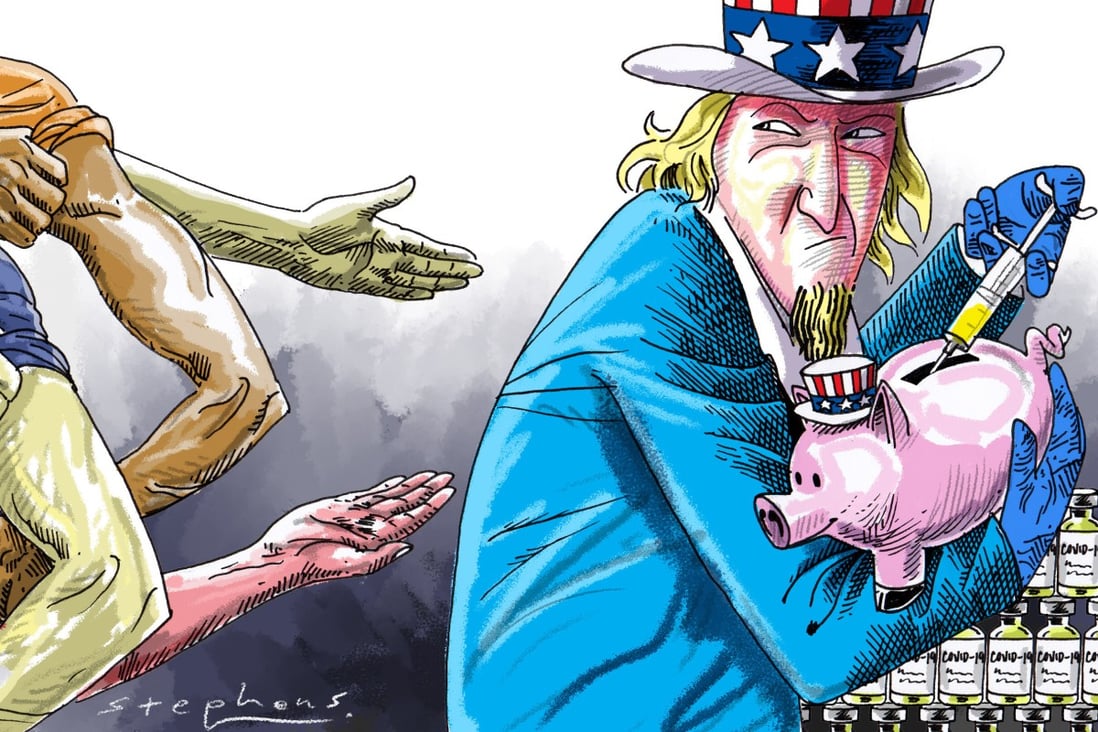
The Price of Vaccine Hoarding
When all hell broke loose in India in the spring, a vaccine party was blooming in the U.S. Free vaccinations were being given at baseball stadiums, pharmacies and even museums. Americans took their masks off at beaches, parks and restaurants and smiled widely. Even tourists got vaccinated due to the overflowing supply of vaccines. In border states like Texas, tens of thousands of Mexicans crossed the border to get vaccinated. Foreign tourists were given the opportunity to get vaccinated at subway stations in New York and airports in Alaska. Employment opportunities increased, money circulated, stock prices went up. It seemed like the U.S. claimed victory in the war against the pandemic earlier this summer.
Just as inoculation rates increased and the U.S.’s confidence increased ... a new virus was growing on the Asian continent. It was the delta variant that would soon sweep through the U.S. and Europe. Though there were only 1% of the cases confirmed to be the delta variant in early March, they rapidly increased, to 93% recently. There have been 150,000 confirmed daily cases, despite these having previously dropped to 10,000. The situation in Europe, including the U.K., was similar. Virus variants are inevitable in a global pandemic. But if it weren’t for the fertile soil of a country with a population of 1.4 billion, India, the delta variant would not have become so powerful. As the number of those infected increase, the variant keeps getting stronger. In India, 20 million people have been infected within four months. It’s as if the virus got an opportunity to test its best combination 20 million times. Thanks to this, the now stronger and fiercer virus reinvaded the U.S. and Europe, which had been building walls with vaccines. The counterattack was a huge success.
The U.S. is suffering from low vaccination rates. Despite mobilizing celebrities and providing incentives, the rate of completed vaccinations remains the same. Are the Americans who refused vaccinations solely to blame for the worsened situation? The real problem the U.S. should have been worried about in the spring wasn’t the United States’ vaccination rate, but India’s. After looking back, that is. When the United States’ vaccination rate surpassed 40%, India’s vaccination rate, which remained at 3%, was a global challenge. The United States’ decision was disappointing. Instead of helping India, the U.S. hoarded the vaccines. According to a report in March, the number of vaccines the U.S. contracted to purchase was 5.5 times its population; it was 6 times that for Canada; 4.2 times that for Great Britain; and 5.5 times that for Germany. India, the world’s largest vaccine producer, was struggling with a vaccine shortage and was hit with a COVID-19 outbreak while the rich countries were busy hoarding. It was an instant when India became the delta variant’s enormous petri dish. In addition, the U.S. banned the exportation of raw materials for vaccines. That was a decisive blow for India.
The world is unfair and the weak suffer. It is sad, but that is the world’s logic. However, the weak have their revenge. The counterattack that the variant used to stagger the vaccine superpower, the United States, arose from the pain experienced by the least powerful people in poor countries. The virus crosses borders even with a barrier built with money and power; the unhappiness of the weak makes even the powerful unhappy. That is the fate of mankind on a small Earth.
Thanks to the pandemic, I realized the limitations of regional leadership. Western leadership was ignorant and selfish about cross-border issues. Is the virus the only global problem? What about climate change? It looks like we’ll cooperatively burn to death on top of a heated Earth. I was at a loss after seeing the two political parties heated up about the election coming soon, having dreamt of cross-border political power. How incompetent are the slogans, climate crisis and global leadership, in this whirlwind of power?
